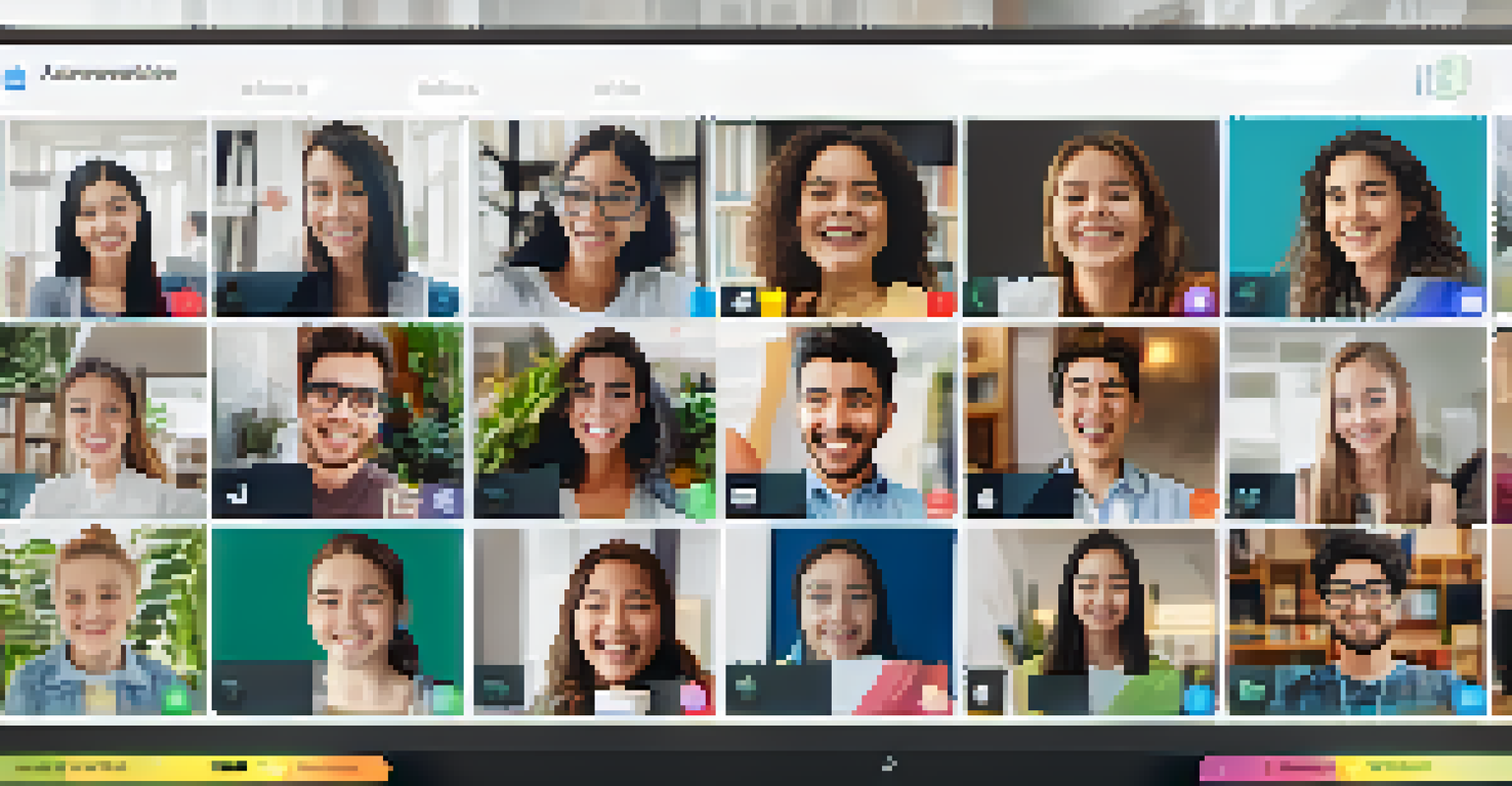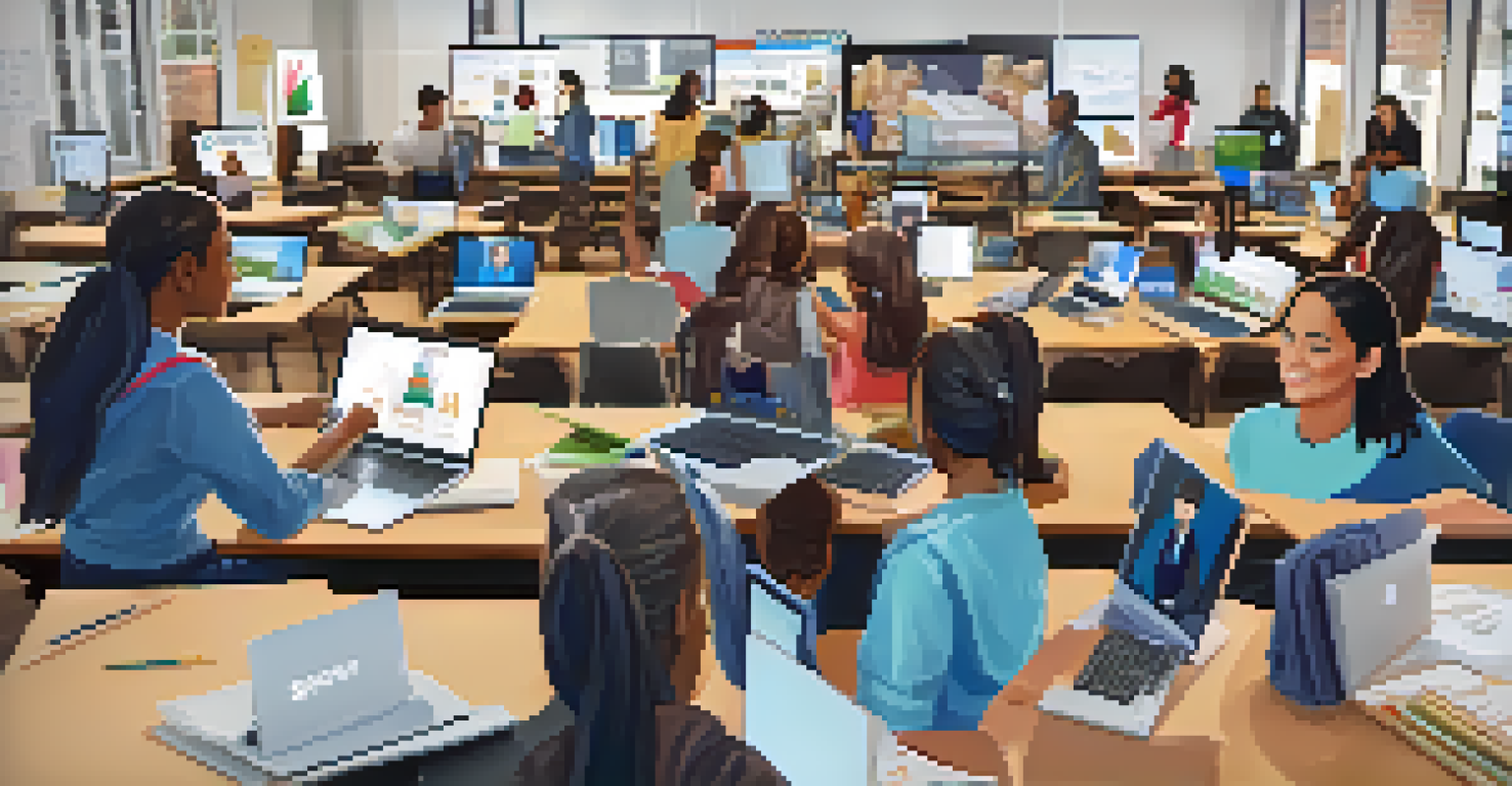Effective Strategies for Teaching in Virtual Classrooms

Establishing a Comfortable Virtual Learning Environment
Creating a welcoming virtual classroom is crucial for student engagement. Start by personalizing the space with visuals that reflect the course content or the students' interests. A comfortable and inviting environment encourages participation and makes students feel valued.
Education is not the filling of a pail, but the lighting of a fire.
Consider using icebreaker activities at the beginning of the course to foster connections among students. These can be simple introductions or fun games that help break down barriers. When students know each other, they’re more likely to engage freely.
Additionally, ensure that your virtual classroom platform is user-friendly. Providing clear guidelines on how to navigate the technology can significantly reduce anxiety for both you and your students. A seamless experience allows everyone to focus on learning rather than technical issues.
Incorporating Interactive Tools for Engagement
Engagement is key in a virtual classroom, and using interactive tools can make all the difference. Features like polls, quizzes, and breakout rooms encourage active participation and collaboration among students. These tools can transform a passive learning experience into an interactive one.

For example, consider using platforms like Kahoot or Mentimeter for real-time quizzes. This not only makes learning fun but also provides instant feedback. Students can see how they’re doing and adjust their learning strategies accordingly.
Moreover, incorporating discussion boards or collaborative projects can help students feel connected. This not only promotes teamwork but also allows them to learn from one another, making the educational experience richer and more diverse.
Setting Clear Expectations and Goals
At the start of the course, it's essential to communicate your expectations clearly. Outline the course objectives, grading criteria, and any specific behavioral guidelines for the virtual classroom. When students know what is expected of them, they are more likely to succeed.
The greatest gift is not being afraid to question.
Additionally, setting achievable goals for each session can help maintain focus. For instance, you might aim to cover specific topics or skills within each class. This structured approach ensures that students remain on track and understand the progress they’re making.
Remember to revisit these expectations regularly. Encouraging students to reflect on their goals and progress can foster a sense of ownership in their learning journey, making them more accountable and motivated.
Utilizing Multimedia and Diverse Learning Resources
In a virtual classroom, variety is key to keeping students engaged. Incorporating multimedia resources like videos, podcasts, and infographics can appeal to different learning styles. This approach not only makes lessons more dynamic but also caters to visual, auditory, and kinesthetic learners.
For example, showing a short video on a complex topic can provide visual context and enhance understanding. Follow it up with a discussion or a related activity that reinforces what they learned. This blend of resources keeps the content fresh and exciting.
Additionally, providing access to diverse reading materials or case studies can enrich the learning experience. Encourage students to explore these resources and share their insights, fostering a culture of collaboration and curiosity.
Fostering a Sense of Community and Connection
Building a strong community in a virtual classroom is vital for student success. Regular check-ins, group activities, and informal discussions can help cultivate relationships among students. When they feel connected, they’re more likely to engage and participate actively.
Consider implementing group projects or peer review sessions that encourage collaboration. These activities allow students to learn from each other and develop teamwork skills, which are essential in today’s workforce. Plus, working together fosters a sense of belonging.
Hosting virtual social events, like game nights or coffee chats, can also strengthen community bonds. These informal settings allow students to unwind and connect on a personal level, enhancing their overall learning experience.
Providing Timely Feedback and Support
Feedback is crucial in any learning environment, especially in virtual classrooms. Offering timely and constructive feedback on assignments helps students understand their strengths and areas for improvement. This guidance is essential for their growth and learning.
Utilize various feedback methods, such as written comments, video responses, or one-on-one check-ins. Each method can provide a different perspective and reinforce learning. Students appreciate knowing where they stand and what they can do to improve.
Moreover, being accessible for questions or support outside of class hours can make a significant difference. Encourage students to reach out if they’re struggling with anything. This approach shows that you care about their success and are there to support them every step of the way.
Embracing Flexibility and Adaptability in Teaching
In a virtual setting, flexibility is key to addressing the diverse needs of students. Recognize that each student may have different circumstances, such as work commitments or family responsibilities. Being adaptable in your teaching methods can help accommodate these variations.
For instance, offering recorded lectures allows students to learn at their own pace. This flexibility can alleviate stress and help them manage their time more effectively. Providing options for assignment submissions can also cater to different learning styles and preferences.

Ultimately, embracing a flexible approach fosters a supportive learning environment. When students feel understood and supported, they are more likely to thrive academically and personally. This adaptability is not just a temporary measure but a vital aspect of modern education.